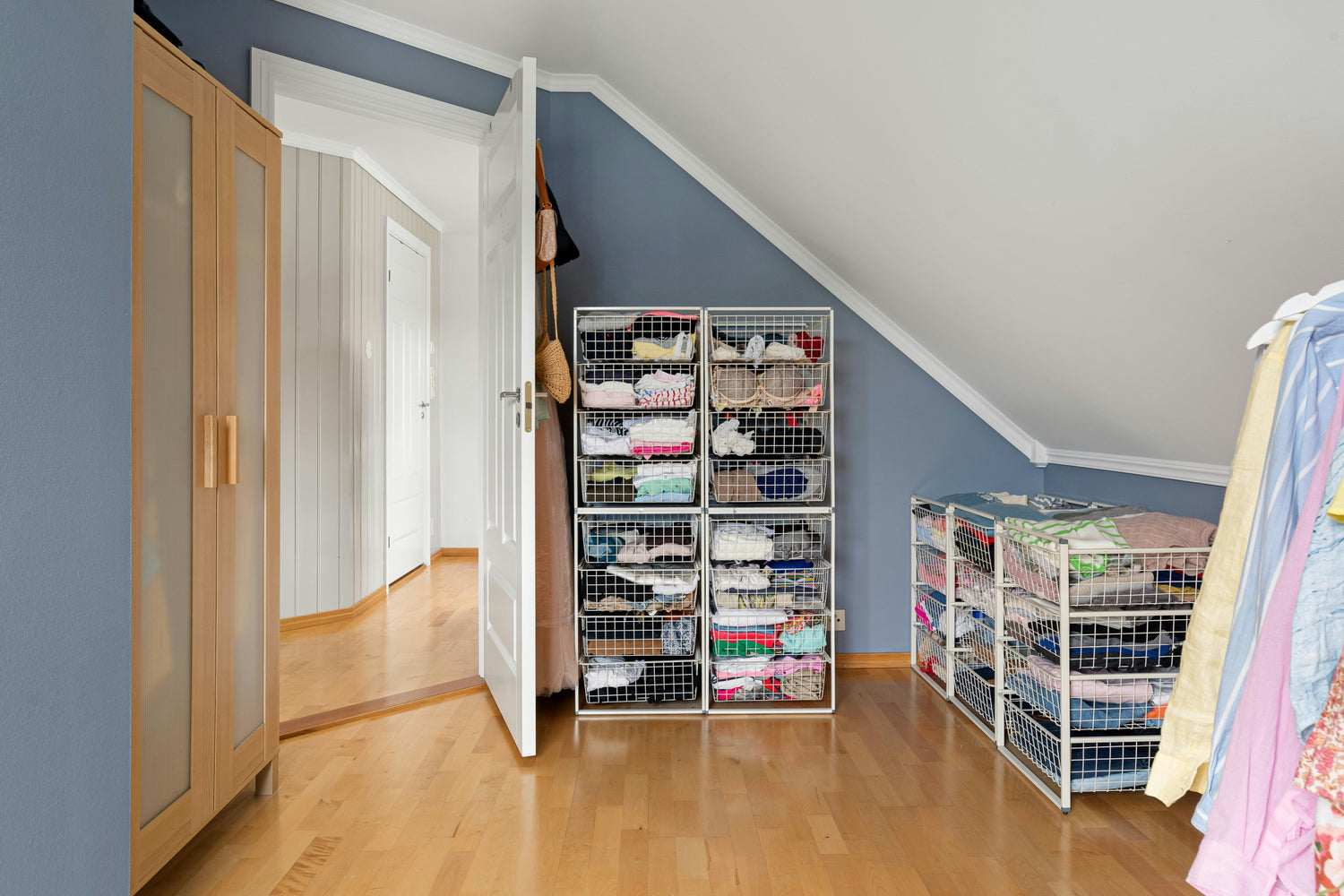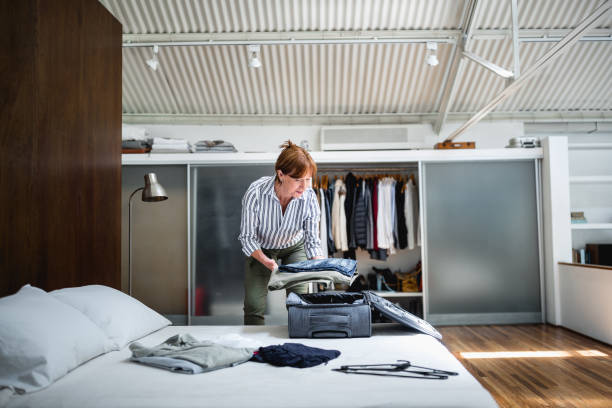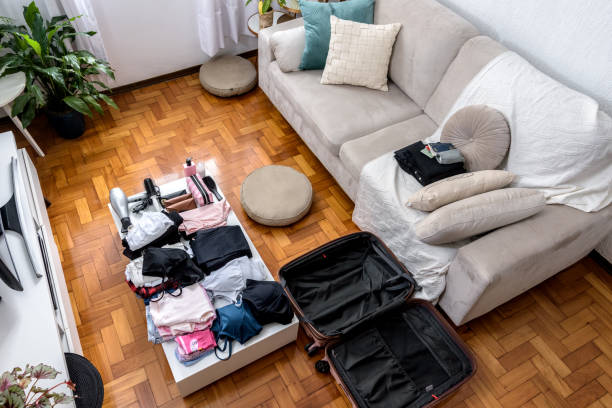Having a neat home positively impacts your mind and health. Who doesn't like tidy homes? When you keep items organized and clean at home, you are increasing their shelf life, which means saving time and money simultaneously. It also makes you feel better in your space. But managing storage isn't an easy task, even for those who try it daily. After all their efforts, they end up making small mistakes that cause big problems over time.
Though they make small choices like buying containers too early or stuffing drawers without a plan, they turn homes into cluttered, stressful places. The good news? Every mistake has a fix.
We have compiled 10 common mistakes people make in storage management. Read and check. Are you making these mistakes? How can you avoid them? Let's see.
Why Storage Planning Matters
When you don't manage your storage well, it will fill your home with useless things. It makes your drawers overflow and cabinets unshut. When you search for everyday items, you can't find them and even waste time.
Once, the most hateful thing in my home was the clutter, and I couldn't even understand how my house suddenly filled with so many things. The reason is that clutter slowly invades when you put unnecessary things anywhere in the home for future use.
Good storage requires planning with brainstorming. No more waste of time and no more mistakes; the right choices help you smartly store things without creating clutter.
Managing storage in the right way helps you in three ways.
- Saves you time by making everything easier to find.
- Saves money by preventing damage or duplicate purchases.
- Lowers stress by clearing your space and your mind.
Now, let's look at what usually goes wrong.
Mistake #1: Keeping Things "Just in Case"
Everyone has a drawer or a closet filled with things they might use one day. Last year, when I finally opened my drawers, all I found were old gadgets and half-used rolls of gift wrap. My closets? Full of clothes that didn't fit me anymore. I realized I had been holding on to things for the wrong reason, and I decided to change that. TBH, the idea is to save money or "just in case" something becomes useful. But over time, this stuff just piles up.
How to fix it:
Whether you like it or not, just set a simple rule of considering all the stuff you haven't used in the past 12 months unessential. You no longer need it. Start with small steps; clear out one shelf or box at a time. Donate items that are in good condition and still useful. Use the "One In, One Out" rule: when you bring something new into your home, something else should go out.
Mistake #2: Buying Bins Before Decluttering
Another common mistake is buying storage bins for future use. If you haven't sorted your stuff, what's the benefit of having such bins at home? This will only raise the number of random containers in your home that don't fit your space or your needs.
How to fix it:
Always start by decluttering and organizing important items on shelves or in drawers. Buy storage bins when you are left with items that you can't put anywhere.
Moreover, measure the area where you are going to put your bin. Don't buy tall containers for a short shelf. Pick clear bins if you want to see what's inside or solid ones if you want to hide clutter.
Mistake #3: No Space Available for Heavy Clothes and Blankets
Winter clothes are bulky and leave no space for other items in the closet. Winter jackets and duvets need a lot of room for storage. Baby clothing also requires space to remain safely stored. Folding and stacking them doesn't help much; they still eat up space.
How to fix it:
Storing bulky items in a small space is possible with vacuum storage bags. They shrink the volume of the items and keep out dust, pests, and moisture. You can store them under beds, in suitcases, or on high shelves. Choose high-quality storage bags like those offered by VacBird with the CubieVac US Standard EPump that quietly evacuates all air in just 25 seconds.
Instead of using half a closet for winter coats during summer, vacuum-seal them and free up space for lighter clothing.
Mistake #4: Overstuffing and Overstacking Bins
Having fewer bins for too much stuff is not a good idea. If you think that you can fit too much into one bin, you will end up with frustration. You can't find what you need, and sometimes you even damage the items inside.
How to fix it:
Less stuff in bins helps you find the required item in no time. Don't stack bins so high that you need to move three to reach one. Don't put sensitive items below and heavy items above, as it causes damage. For soft goods like clothes or bedding, vacuum-seal them first to reduce the volume before placing them in bins. You can also use stickers to label your bins for easy storage and retrieval of items.
Mistake #5: Wasting Vertical and Hidden Storage
Another mistake people make is forgetting that they have space above their heads or under their furniture. That's free, costs you nothing, but saves a lot.
How to fix it:
There are some ways you can use every bit of your home to get a clutter-free life.
- Install floating shelves
- Use wall-mounted racks
- Hang organizers behind various doors for shoes and scarves
- Put extra clothes and books in under-bed containers
- Add risers inside cupboards for extra space
- Add wall hooks in the kitchen for pans
- Add a shelf over the stove for storing stuff you need for everyday cooking.
Mistake #6: Mixing Different Items in the Same Space
One drawer has batteries, a screwdriver, spare keys, old receipts, and maybe some coins. Sounds familiar? Is it possible for you to find something in this kind of mixing?
How to fix it:
The best way to avoid this problem is by dividing your space by category. Keep kitchen tools in the kitchen and tech cords near your desk. Use drawer dividers or small boxes inside larger bins to keep similar things together.
Even in your bathroom, storage management with benefits is possible if you use one basket for hair products, another for skincare, and another for medicines without mixing anything.
Mistake #7: Poor Storage for Sensitive Items
Your documents and electronics are sensitive items and can be affected by humidity and dust. Even your daily used leather bags are at risk of damage due to temperature and a humid environment. People mostly keep them in a garage or attic, and both have no ideal conditions.
How to fix it:
Better places to store these items are bedroom closets or locked cabinets. They have dry, cool spots which keep these items damage-free. For better storage, you can use airtight boxes for documents or vacuum storage bags for fabrics and photos. Add silica gel packs to boxes with electronics or photos to absorb moisture.
Mistake #8: Hidden Clutter Zones
Clutter builds slowly and quietly. It speaks when it overflows. Don't you have a junk drawer or stuff-filled garage corner or shelf that you always think to clean in the upcoming weekend but never do? Yes, these are hidden clutter zones. These places hide clutter until one day, it overflows and disturbs your normal routine.
How to fix it:
Clear containers help in the easy visibility of your stored items. Labeled items allow you to find the required thing in no time. Hidden clutter zones require monthly cleaning, and setting a reminder will help you with this. Don't throw things in "for now." Decide immediately if they're worth keeping or need to go.
Mistake #9: Not Keeping Your Storage System Up to Date
Having a good storage system is great, but don't think that it will work for years. Changes occur in everyone's life, including routine adjustments, as families grow, so the storage system also requires an upgrade.
How to fix it:
You must review your storage areas once every season. You can rotate seasonal clothes and remove unused items. It's better to reorganize what's left. The best decision is to use vacuum storage bags to store off-season clothes or blankets so your active spaces stay neat.
Mistake #10: Choosing Style Over Usefulness
Good-looking storage attracts everyone but never gives a solution. The matching baskets and trendy organizers are just decoration pieces, not holding any real worth to help you manage items.
How to fix it:
Focus on function first. Ask yourself: Does this container make my life easier? Does it fit the space I have? If it checks both boxes, then pick the color or style you like.
Best Habits for Better Storage
Organized homes fill your heart with happiness. If you make the following suggestions your habit, you will keep your home organized for the long run with less effort:
- The 80/20 rule is great for keeping home storage in better shape. Use 80% of the space and leave 20% empty. It saves you from rearranging everything when you add something new.
- Labeling bins and drawers is good as it saves you time by helping you find things.
- Buying double-duty furniture, like storage ottomans and coffee tables with hidden space.
Conclusion
Home organization is easy if you know how to avoid mistakes that common people make unintentionally. The biggest mistake in storage management is holding onto too much, especially useless things.
Cleaning a single drawer or using vacuum storage bags for winter clothes to free up the closet. Start with these small portions and you will see progress in small chunks. And the end results are clutter-free and fully organized homes.






Commenta
Questo sito è protetto da hCaptcha e applica le Norme sulla privacy e i Termini di servizio di hCaptcha.